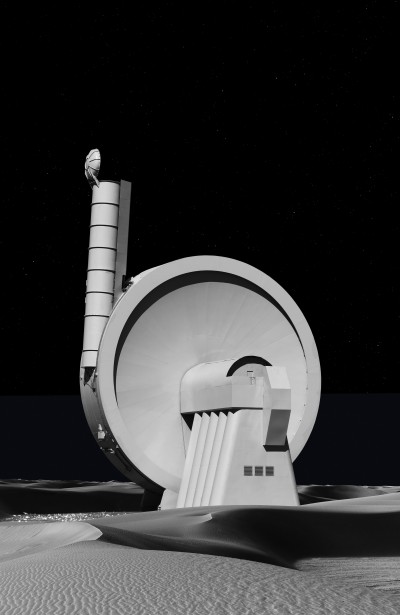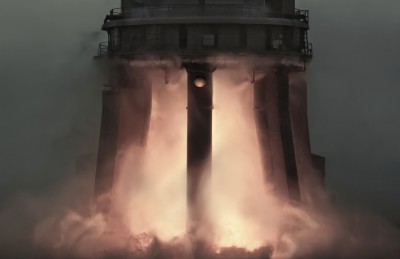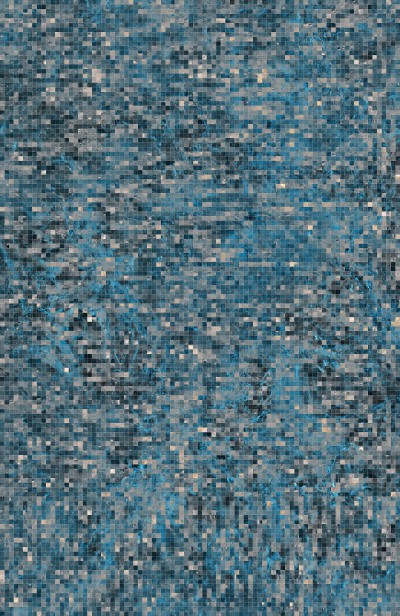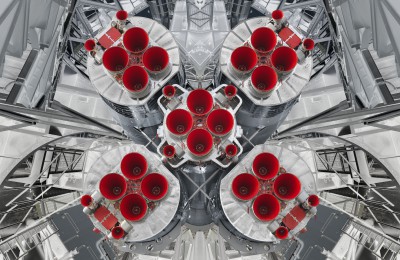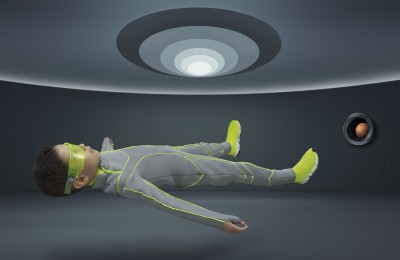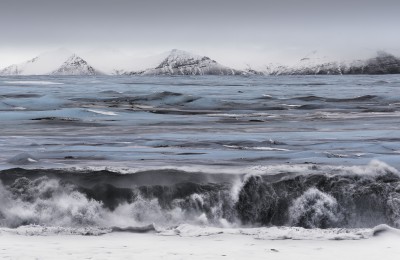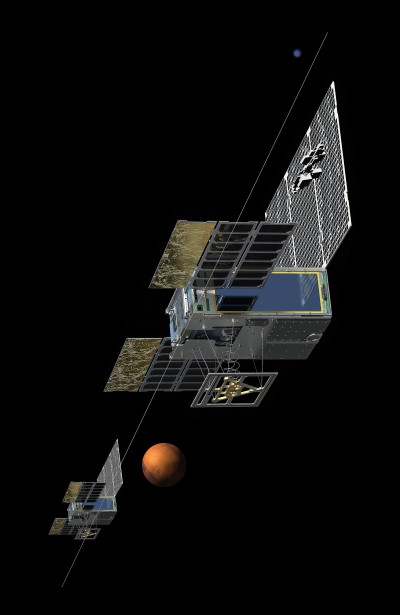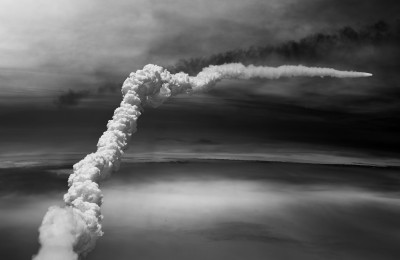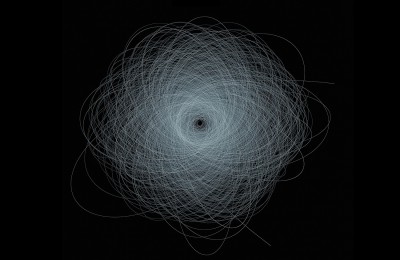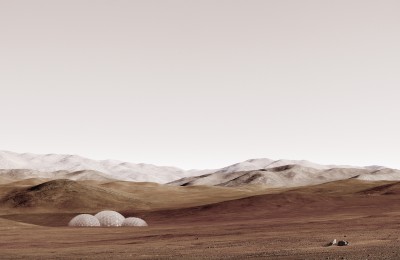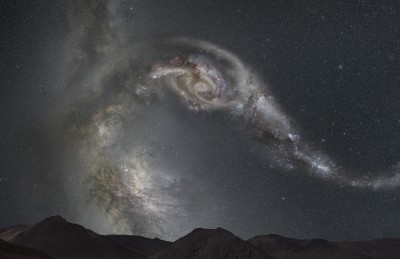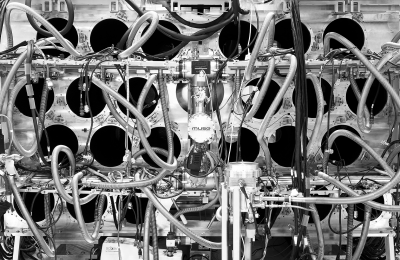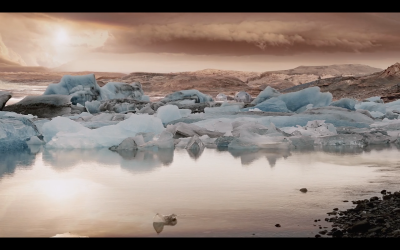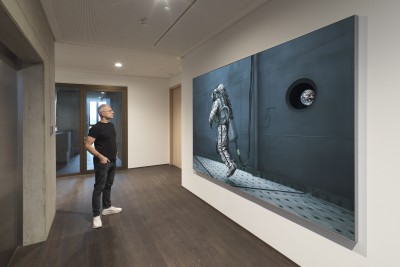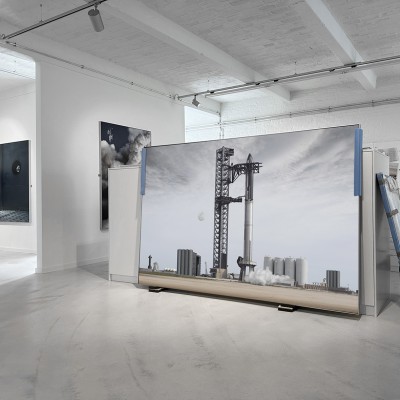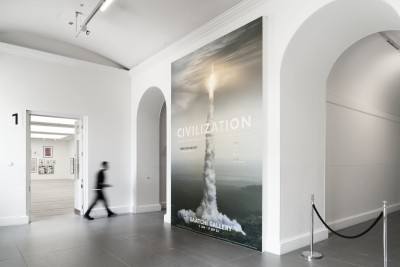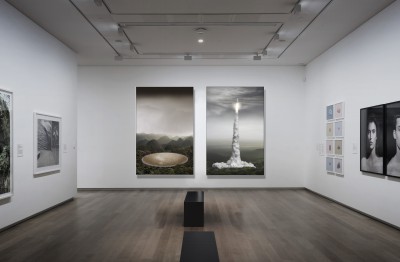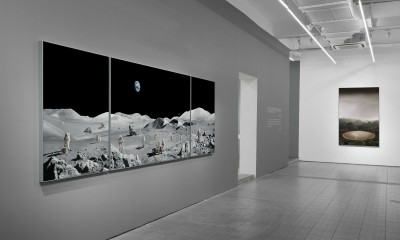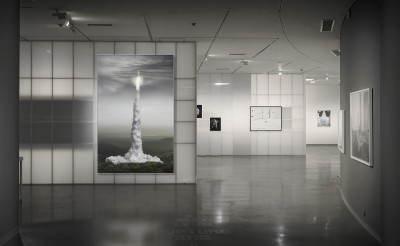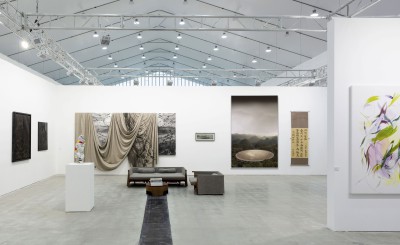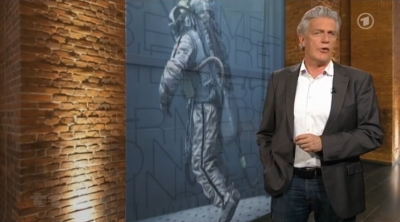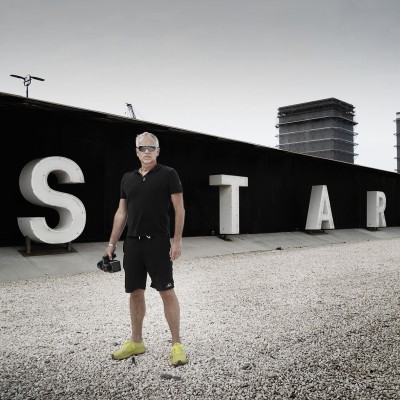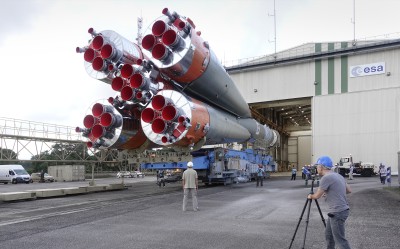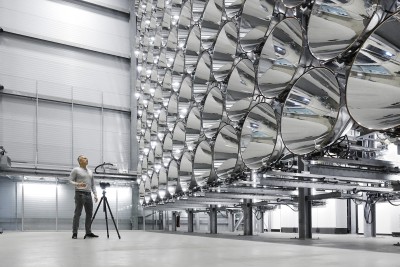tracking station
Format 1: 132 x 202 cm / 52 x 79.5 in, edition of 6 + 2 AP
Format 2: 67 x 102 cm / 26.3 x 40.2 in, edition of 6 + 2 AP
Hybrid photography, archival pigment print, aludibond, diasec, custom-made aluminium frame
On a remote mountain plateau near the North Pole stretches a surreal kind of landscape of over 100 geodesic domes in a vast snowy landscape. It is the world’s northernmost and also largest satellite ground station located near Longyearbyen on the island archipelago of Svalbard. SvalSat, as the station is known, is a scientific instrument for the investigation of the effects of climate change. Every day, the antennas hidden in the domes track more than 3,500 flybys by several hundred satellites, mainly Earth observation satellites, in polar orbit, cruising from pole to pole every one and a half hours. The satellites use radio waves to provide images of shrinking glaciers, changing forests, eroding coastlines and other symptoms of global warming such as sea surface temperatures and solar reflection rates. Enormous amounts of data are downloaded and transferred via fibre-optic cables underwater to the Norwegian mainland at Tromsø, the control station there. As the amount of data from space grows exponentially, the ground receiving stations are playing an increasingly vital role.
The artwork “tracking station” shows the futuristic Svalbard satellite station on Platåberget near Longyearbyen. The viewer’s gaze is drawn into a white snowscape over which numerous geodesic domes of different colours are distributed. The moon floats over the landscape, connecting the domes of the ground station with outer space in a triangular composition. Each of these domes conceals a highly sensitive antenna that picks up the signal of flyby satellites 14 times a day. Data from the Earth observation satellites are taking on an increasingly central role in terms of the transformation of the Earth triggered by climate change. The dome colours of green, blue and white symbolise the forests, oceans and ice whose transformation and destruction due to ongoing global warming has become of such fundamental importance for our future. Space-based observation technologies have become indispensable to our civilisation because without the precise measurement of the Earth from space we would not be aware of a good many terrestrial processes of change.

